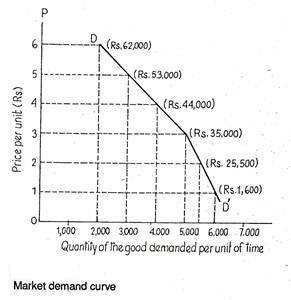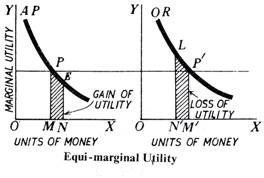Motivational Research is a psychological approach to understanding the underlying motives, desires, and emotions that influence consumer behavior. Developed in the mid-20th century, it uses techniques like in-depth interviews, focus groups, and projective tests to uncover subconscious factors driving purchasing decisions. This research delves beyond surface-level preferences to explore emotional triggers, cultural influences, and personal values that shape consumer choices. By identifying these hidden motivations, businesses can craft marketing strategies that resonate deeply with target audiences, leading to more effective branding, product development, and advertising campaigns. It emphasizes the psychological connection between consumers and products, fostering loyalty and engagement.
Types of Motivational Research:
This qualitative technique involves one-on-one, unstructured interviews to explore a consumer’s underlying motivations. The focus is on understanding emotional triggers, personal experiences, and subconscious reasons behind their choices. For instance, a consumer may reveal why they associate a product with prestige or comfort.
Focus group involves guided discussions among 6–12 participants to gather diverse opinions about a product, service, or concept. These discussions often reveal shared motivations, attitudes, and perceptions.
These techniques use indirect methods to uncover hidden emotions and motivations. Common methods include word association, sentence completion, and thematic apperception tests. Participants project their feelings and thoughts onto ambiguous stimuli, revealing subconscious patterns.
Observing consumers in real-life settings, such as stores or online platforms, helps researchers understand behavior without direct interaction. Observational methods reveal actions influenced by subconscious motives.
- Surveys and Questionnaires
While typically structured, surveys can include open-ended questions designed to delve into emotional drivers behind purchases. These tools gather broad data, combining qualitative and quantitative insights.
This involves segmenting consumers based on psychological traits, such as personality, values, interests, and lifestyles. It reveals deeper motivations and helps marketers align products with consumer aspirations.
Controlled experiments test consumer responses to specific stimuli, such as packaging, pricing, or advertising. These experiments reveal preferences influenced by emotional and subconscious factors.
This advanced technique uses brain imaging and physiological measurements to study how consumers react to marketing stimuli. It identifies emotional responses and subconscious influences.
Nature of Motivational Research:
1. Psychological in Nature
Motivational research focuses on the psychological aspects of consumer behavior. It delves into emotions, desires, fears, and subconscious motives to understand why consumers behave in specific ways. This psychological focus helps businesses create marketing strategies that resonate deeply with their audience.
Example: Understanding that consumers buy luxury goods to express status and self-worth.
2. Exploratory and Qualitative
This research is primarily exploratory, relying on qualitative methods to uncover deep insights. Techniques like depth interviews, focus groups, and projective methods are used to explore the emotional and subconscious dimensions of consumer behavior, rather than relying on statistical data alone.
3. Subconscious-Oriented
Motivational research emphasizes the role of subconscious factors that influence consumer decisions. It does not stop at surface-level preferences but digs deeper to uncover hidden triggers.
Example: A consumer might choose a product due to nostalgia or a subconscious association with childhood memories.
4. Focus on Emotional Drivers
Consumers often make decisions based on emotions rather than logic. Motivational research identifies these emotional triggers, such as love, fear, pride, or security, and connects them to product attributes or marketing campaigns.
Example: Highlighting themes of safety and care in advertisements for insurance products.
5. Interdisciplinary Approach
Motivational research draws from various disciplines, including psychology, sociology, anthropology, and marketing. This interdisciplinary nature allows it to provide a comprehensive understanding of consumer behavior.
6. Qualitative Techniques-Driven
It relies on qualitative tools such as projective techniques, thematic apperception tests, and in-depth interviews. These methods help uncover underlying motives and attitudes that are not easily captured through structured surveys or quantitative methods.
7. Consumer-Centric
The core focus of motivational research is the consumer. It seeks to understand their values, preferences, and attitudes, ensuring that businesses create offerings that align with consumer expectations and needs.
Example: Identifying that health-conscious consumers prefer organic and non-GMO products.
8. Application-Oriented
The ultimate goal of motivational research is practical application. Businesses use its findings to improve product design, refine marketing campaigns, and enhance customer engagement, resulting in better business outcomes.
Scope of Motivational Research:
1. Understanding Consumer Motivation
Motivational research delves into the psychological triggers that influence consumer behavior, such as emotions, desires, fears, and social influences. By identifying these factors, businesses can tailor their offerings to meet the underlying motivations of their target audience.
Example: Discovering that consumers associate a product with status can guide marketing campaigns emphasizing luxury and exclusivity.
2. Product Development and Innovation
The insights derived from motivational research help businesses design and develop products that resonate with consumer needs. It identifies features, styles, and attributes that appeal to customers’ preferences, ensuring the product meets market demands.
Example: Understanding that eco-conscious consumers value sustainability can lead to the creation of environmentally friendly products.
3. Advertising and Communication Strategies
Motivational research informs the creation of compelling advertising campaigns. By understanding emotional drivers, businesses can craft messages that resonate deeply with their audience and create a lasting impact.
Example: If research shows that families value security, advertisements for insurance products can focus on themes of protection and stability.
4. Brand Positioning
Motivational research helps companies position their brand effectively by identifying consumer perceptions and emotional connections. It uncovers how consumers view a brand and what they expect from it, aiding in creating a strong and differentiated brand identity.
Example: A brand associated with innovation and cutting-edge technology can position itself as a leader in its industry.
5. Market Segmentation and Targeting
This research is crucial for dividing the market into segments based on psychological traits, such as personality, values, and lifestyles. It enables businesses to target specific consumer groups with tailored products and marketing strategies.
Example: Marketing adventure travel packages to thrill-seekers based on their risk-taking personality.
6. Predicting Consumer Trends
Motivational research identifies shifts in consumer preferences and emerging trends, enabling businesses to stay ahead of the competition. It helps predict future demands and adapt strategies accordingly.
Example: Research showing an increase in health consciousness can lead to the introduction of organic or low-calorie products.
7. Improving Customer Experience
By understanding the motivations behind consumer satisfaction or dissatisfaction, businesses can enhance their service delivery and customer experience. It ensures a seamless alignment between consumer expectations and the brand’s offerings.
Example: Recognizing the importance of personalized experiences for customers can lead to the implementation of loyalty programs.
8. Competitive Analysis
Motivational research provides insights into what motivates consumers to choose competitors’ products or services. By analyzing these factors, businesses can refine their strategies to capture market share.
Example: Discovering that competitors offer better emotional appeal in their advertising can inspire more impactful campaigns.
Role of Motivational Research:
Motivational research explores the subconscious motives, emotions, and attitudes that drive consumer decisions. By uncovering why consumers prefer certain products or brands, businesses gain a deeper understanding of their needs and desires. For instance, it may reveal that consumers buy luxury products not just for utility but to express status and identity.
Insights from motivational research guide the development of products that resonate with consumer preferences. It identifies features, designs, or functionalities that appeal to the target audience, ensuring products align with their psychological and emotional expectations. For example, research might show that eco-conscious consumers prefer sustainable materials, leading to better product design.
Effective marketing campaigns rely on emotional resonance. Motivational research helps craft messages that appeal to consumer emotions, making advertisements more engaging and memorable. For instance, if research shows that a target audience values family bonds, a brand can create ads centered around themes of togetherness and love.
By understanding the psychological triggers that create strong emotional connections with a brand, businesses can foster loyalty. Motivational research reveals what makes consumers repeatedly choose a particular brand, such as trust, quality, or emotional satisfaction, enabling companies to strengthen these attributes.
Motivational research detects shifts in consumer attitudes, values, and preferences. By analyzing these trends, businesses can adapt their strategies to stay relevant in the market. For example, an increasing preference for health-conscious lifestyles might prompt companies to innovate in the wellness sector.
This research aids in segmenting the market based on psychological and emotional traits, such as personality, aspirations, or lifestyles. It allows businesses to focus on specific consumer groups with tailored marketing strategies, maximizing the impact of their campaigns.
Launching new products or campaigns involves risks. Motivational research minimizes these by providing insights into consumer preferences and potential reactions, helping businesses avoid costly failures and refine their strategies before implementation.
Businesses gain a competitive edge by leveraging unique insights from motivational research. By understanding unmet needs or emotional triggers that competitors overlook, companies can create distinctive products, services, or campaigns that stand out in the market.
Like this:
Like Loading...

